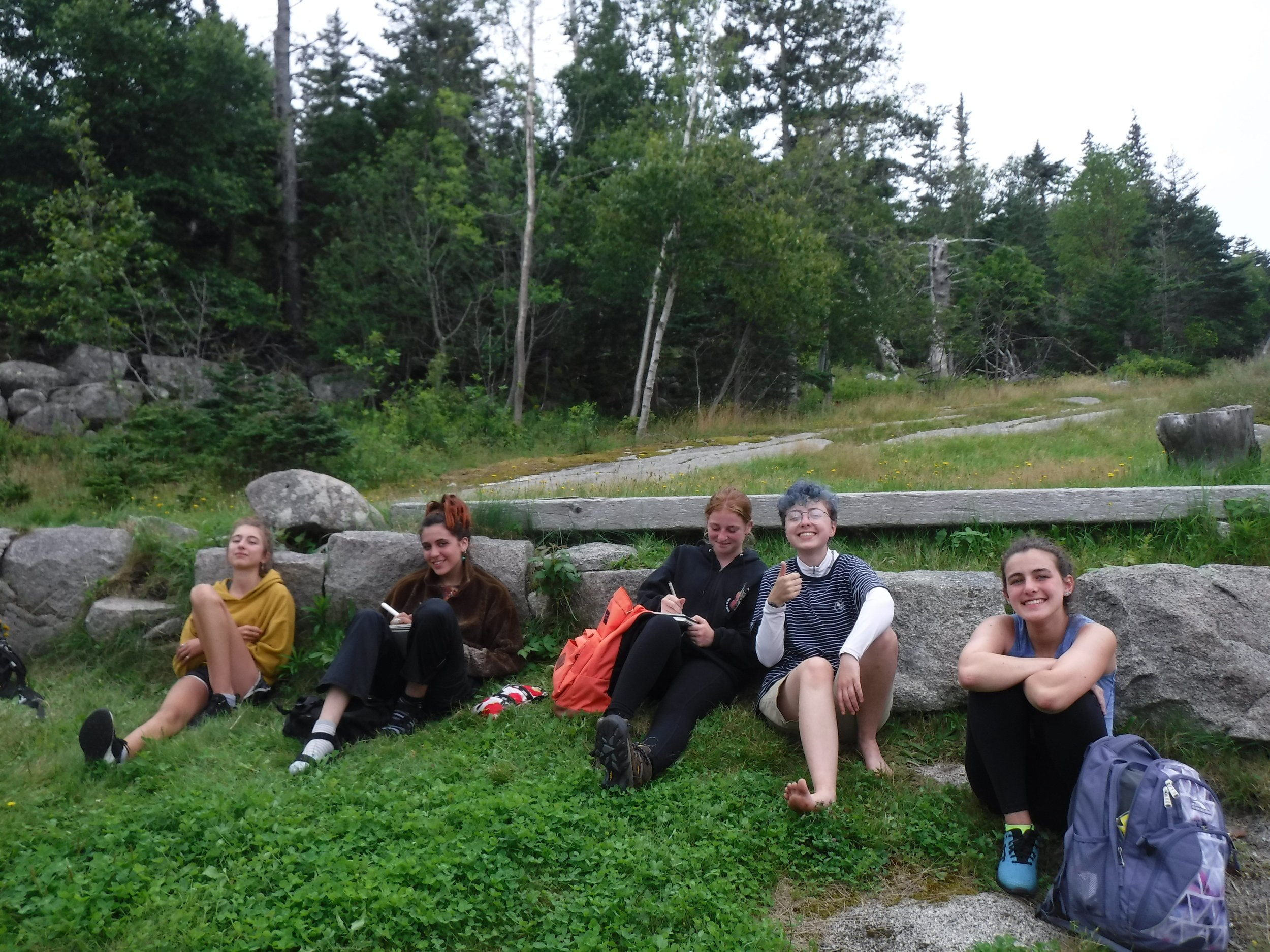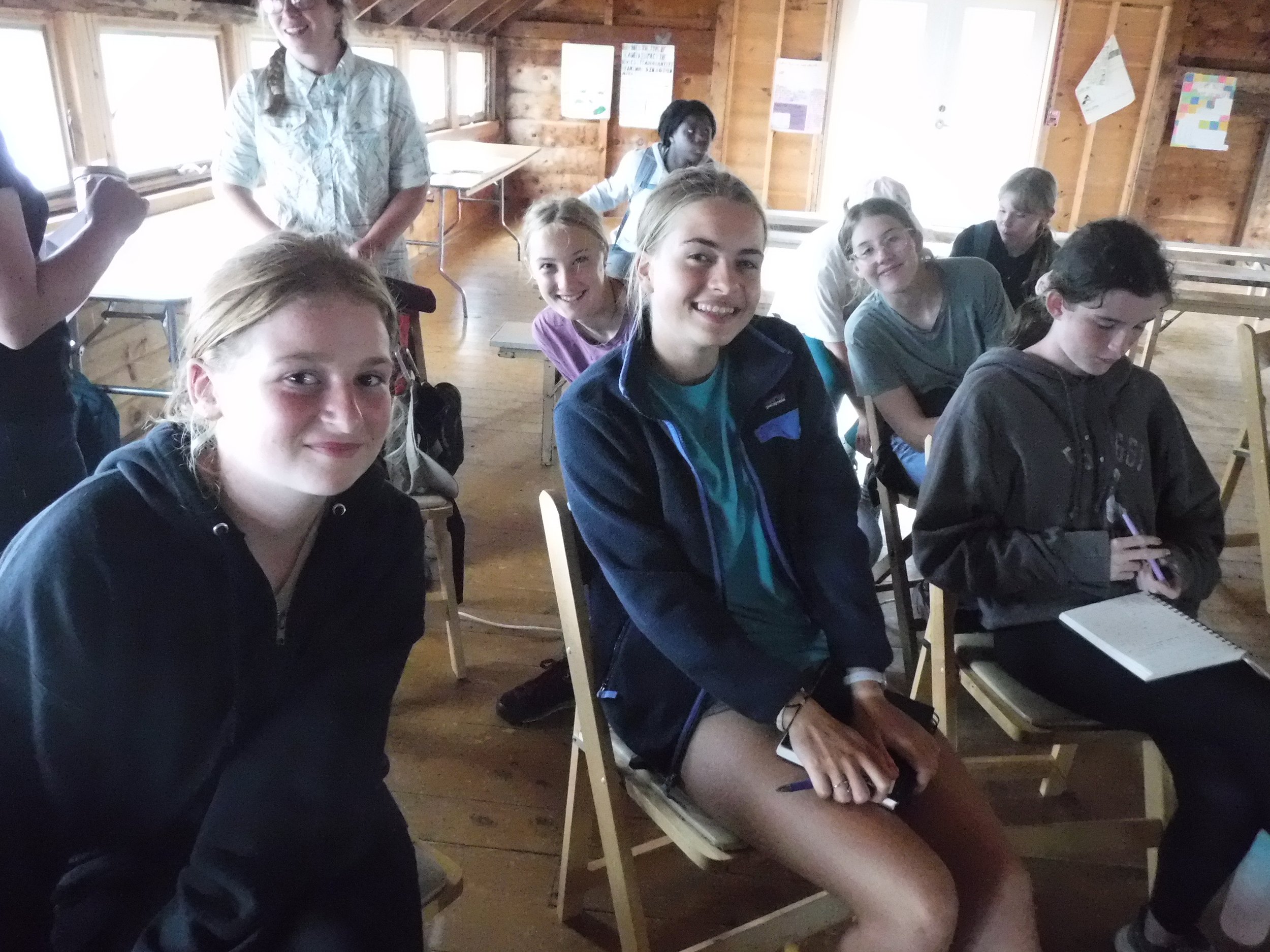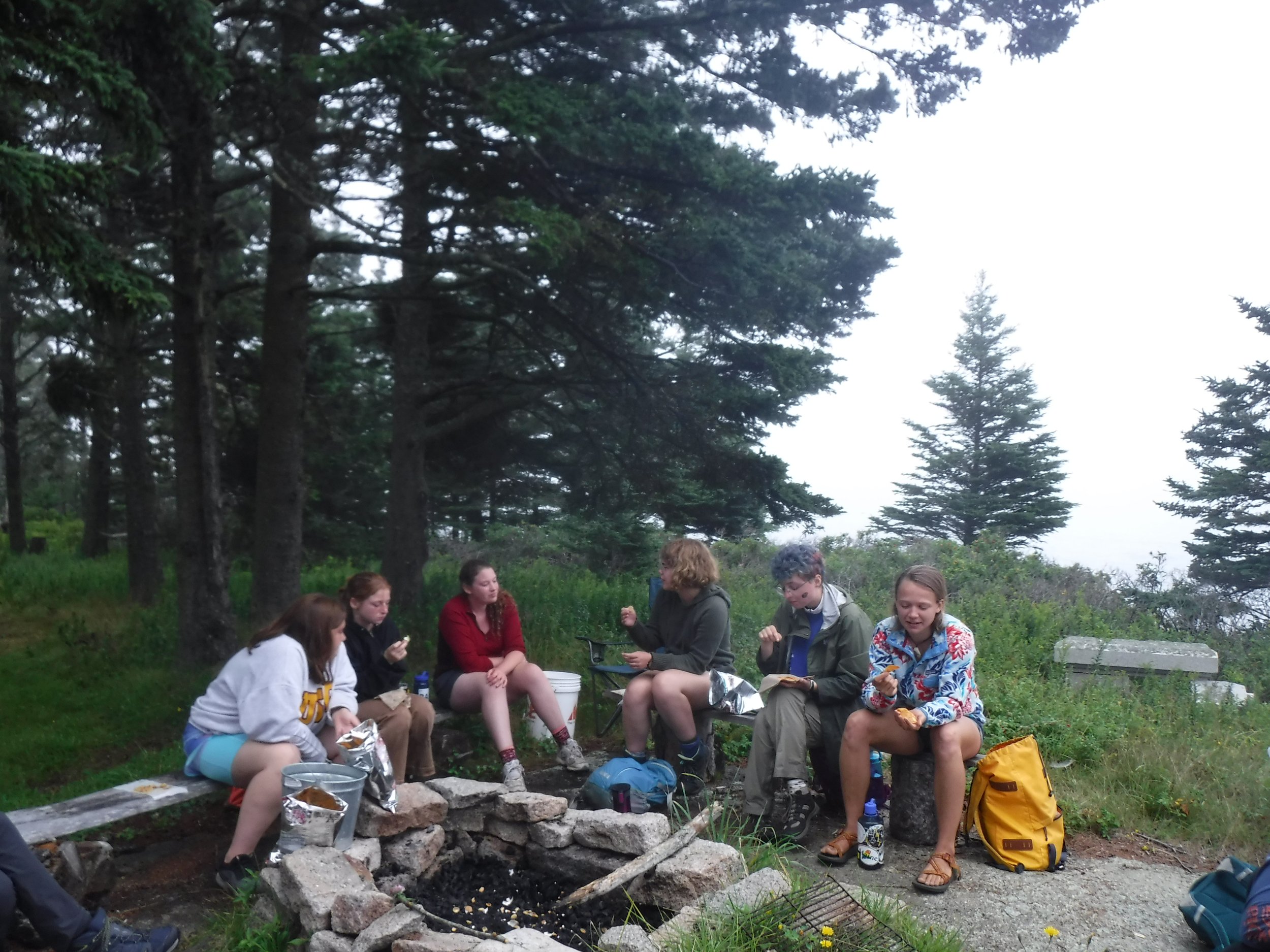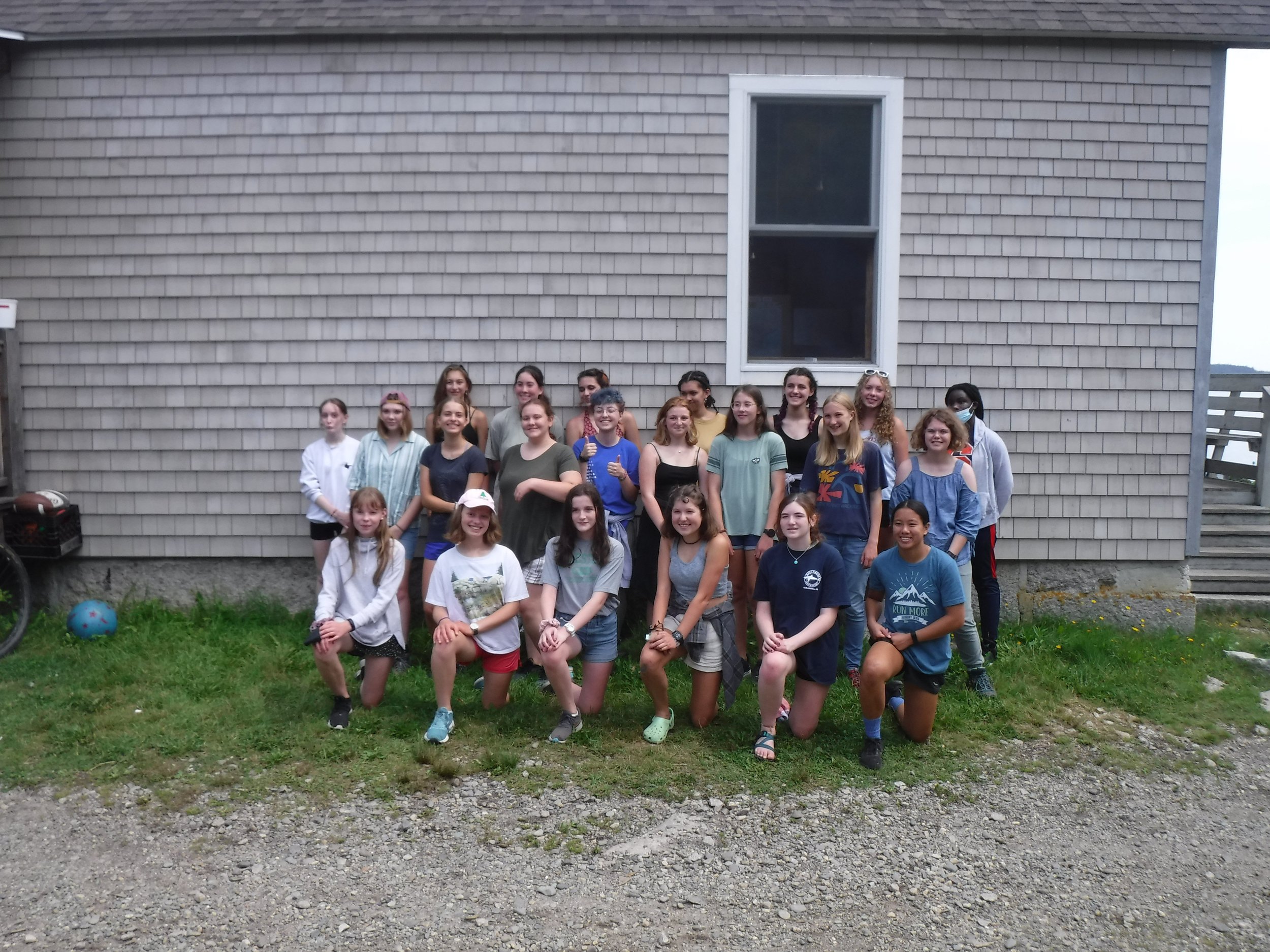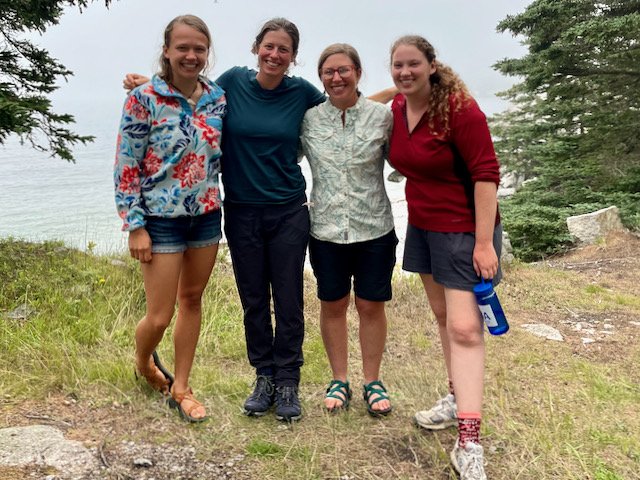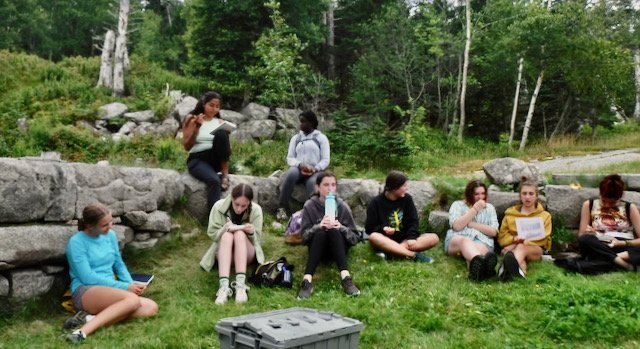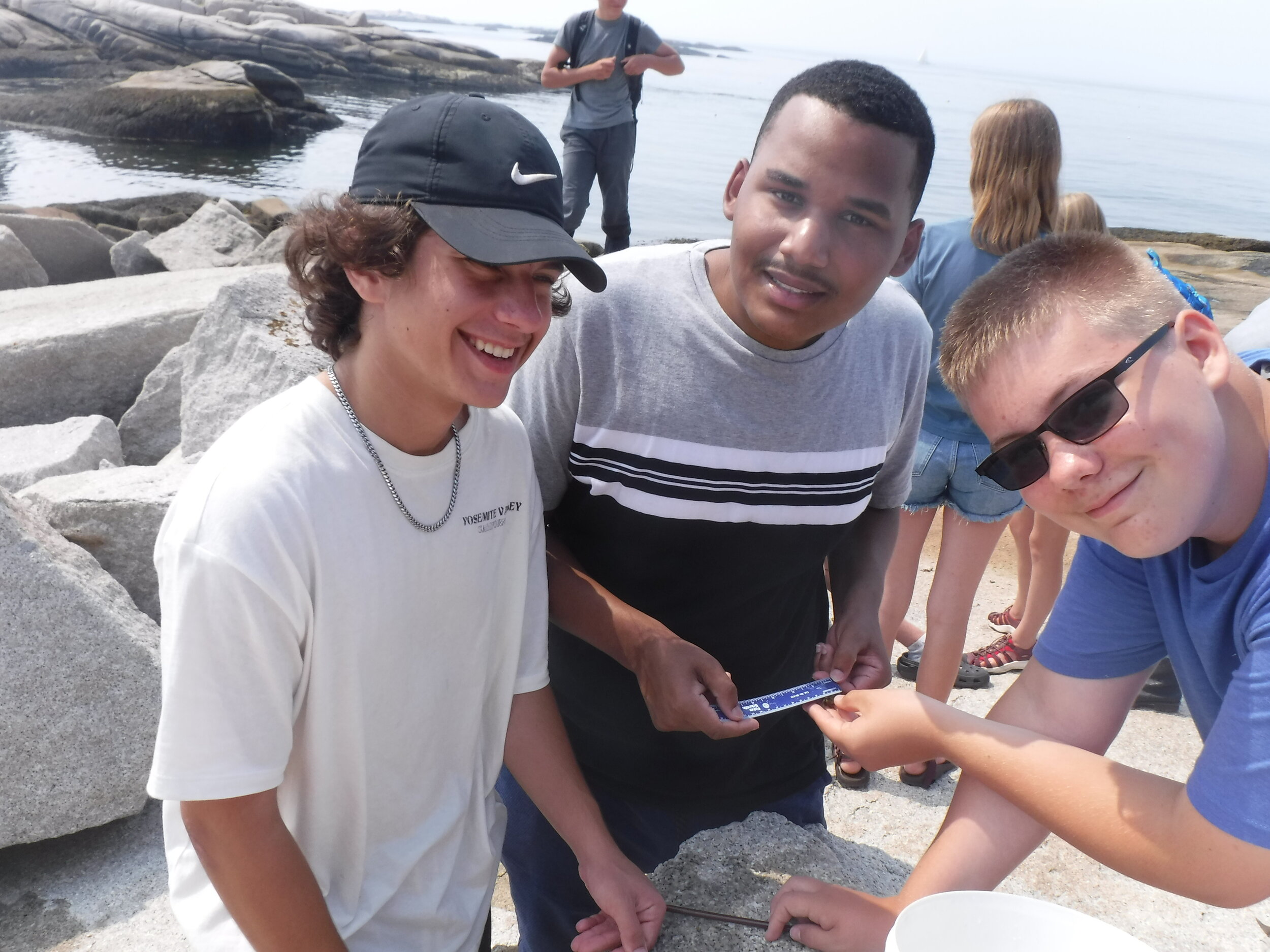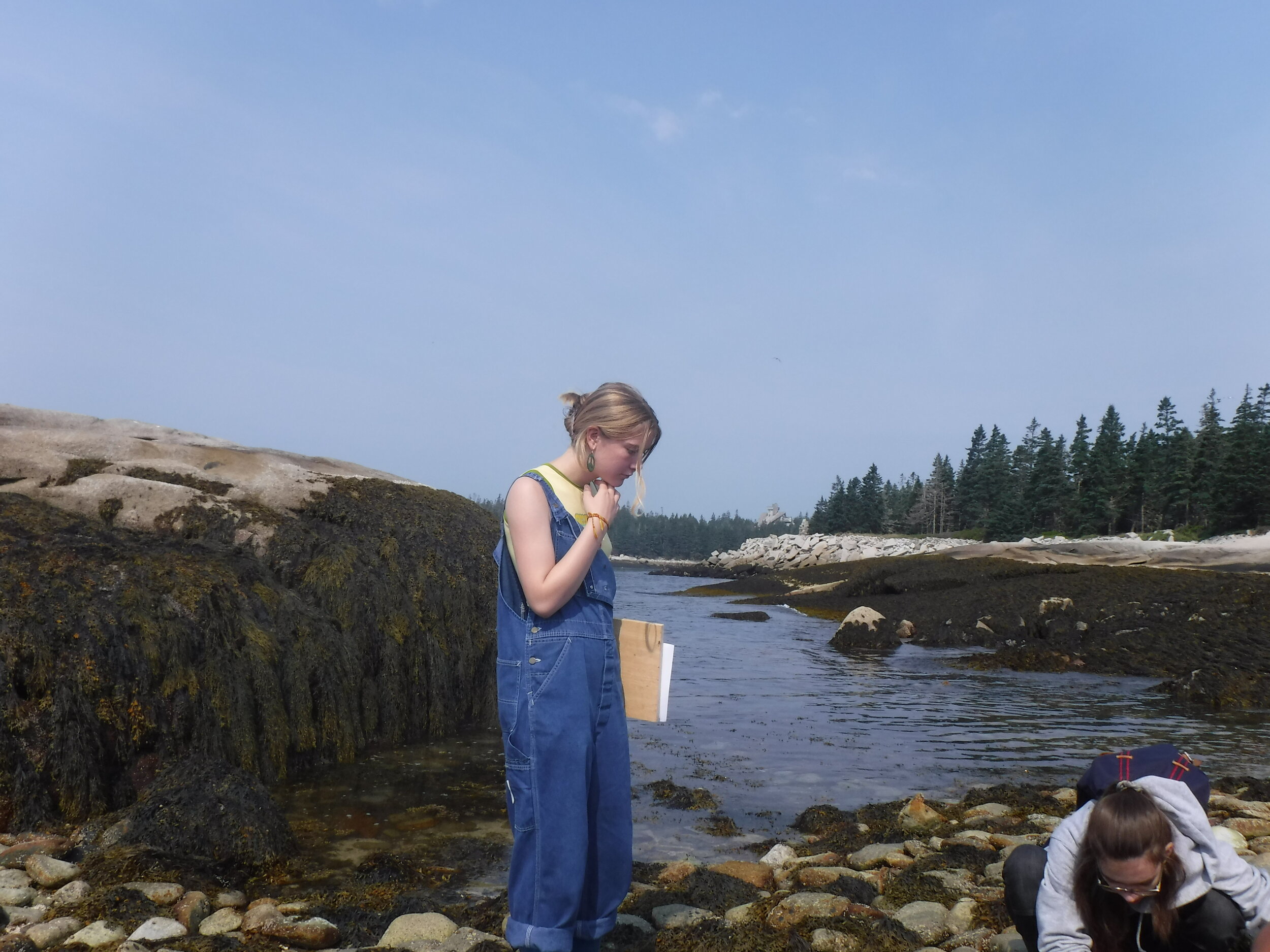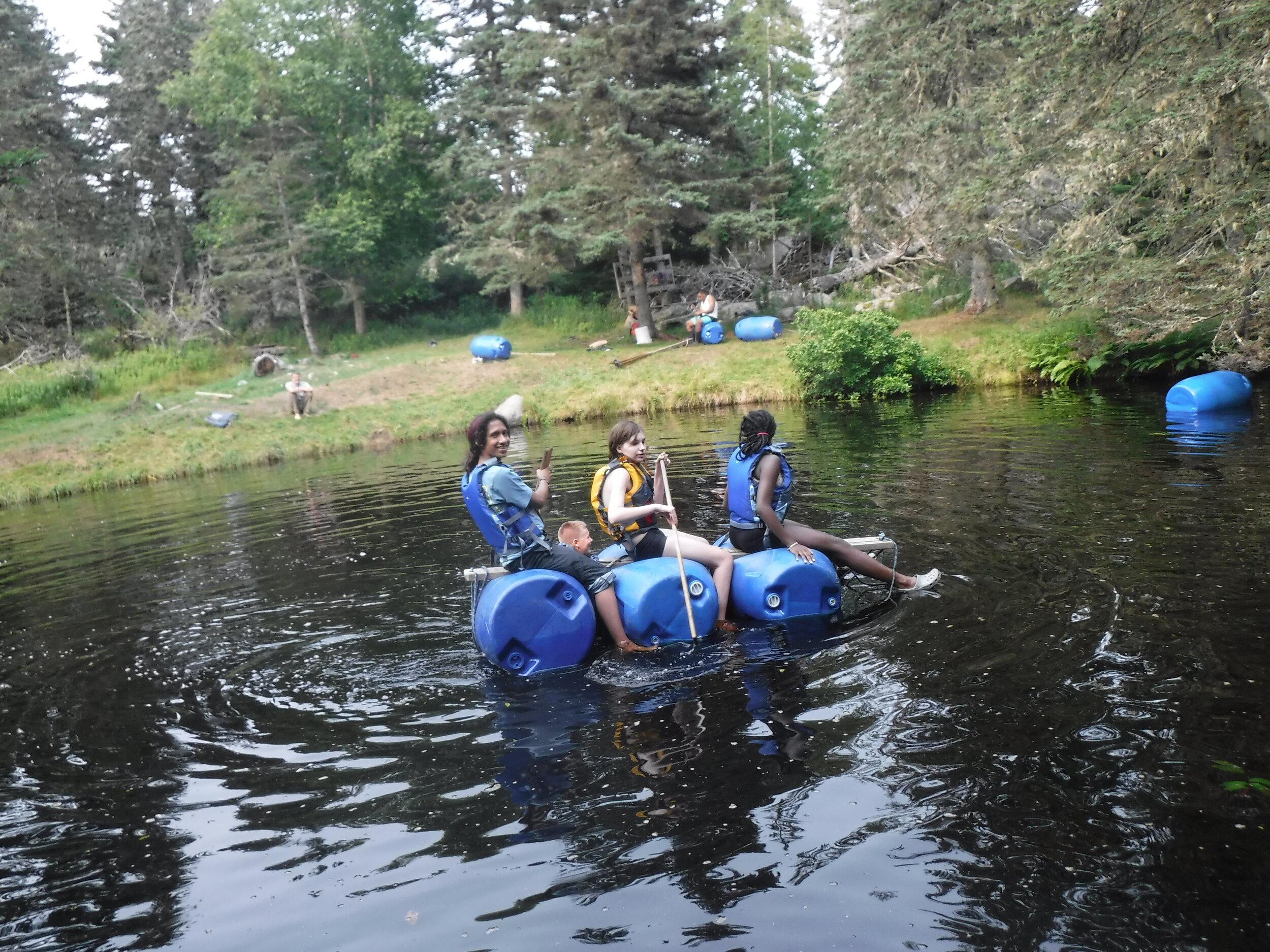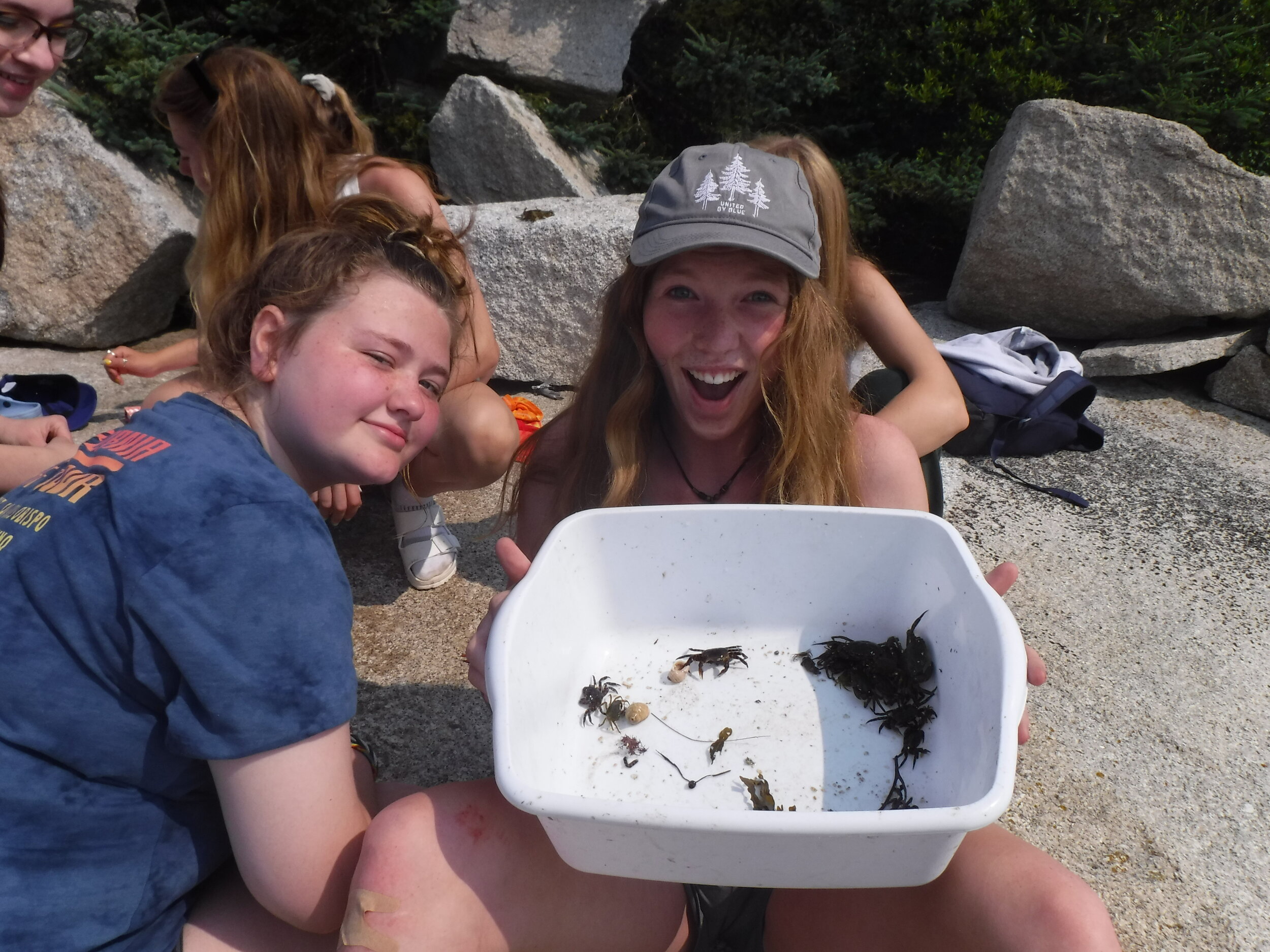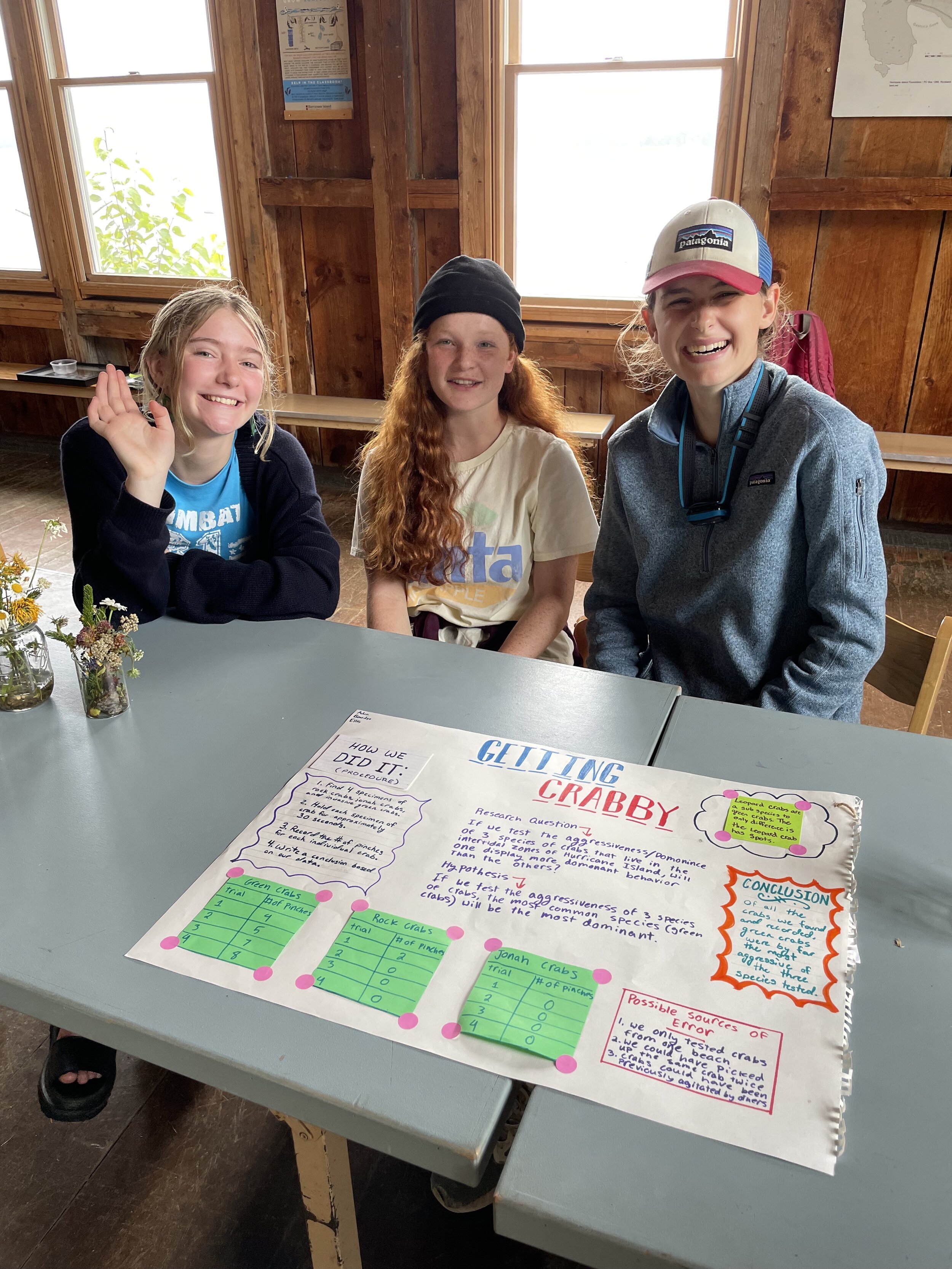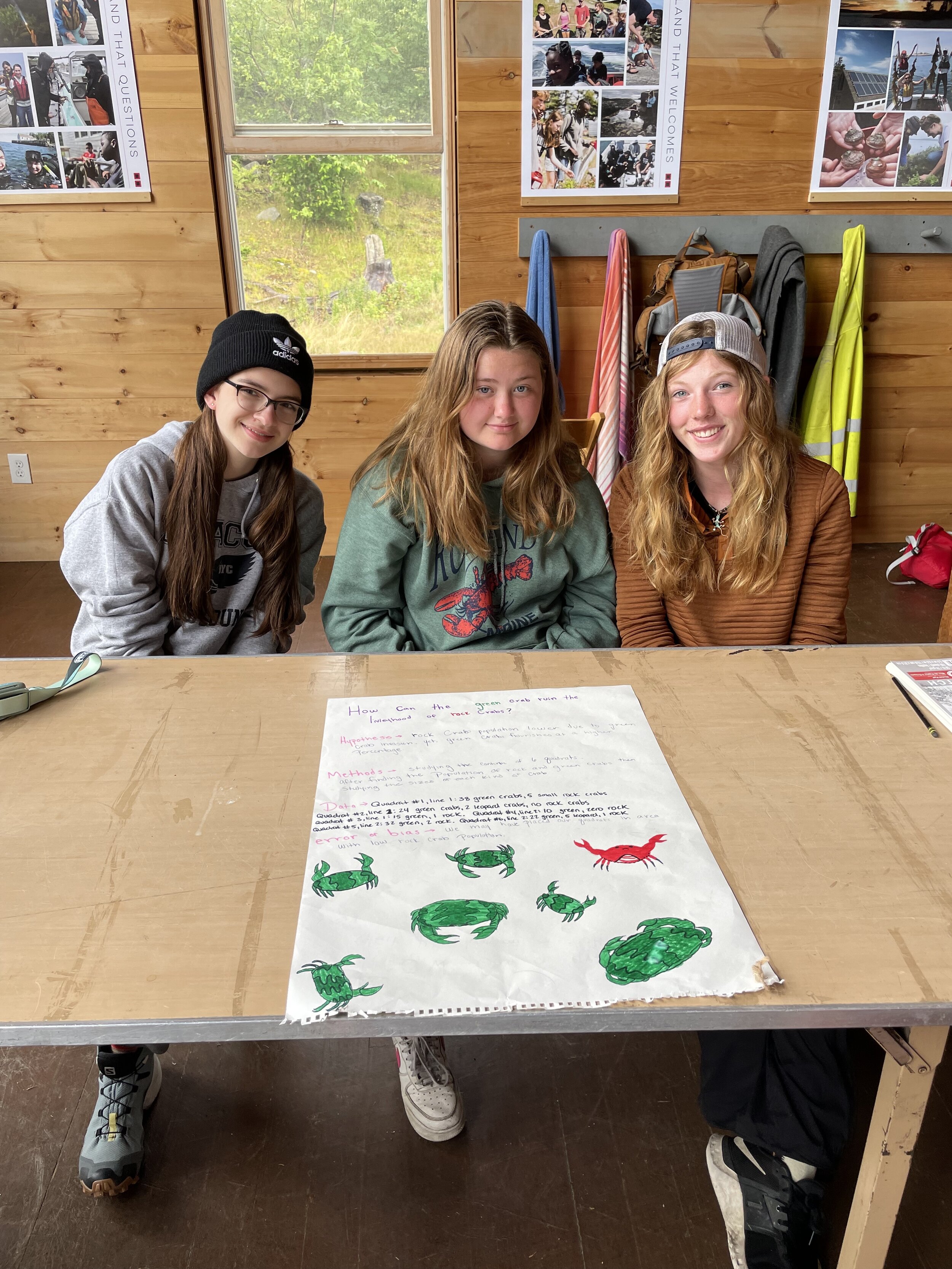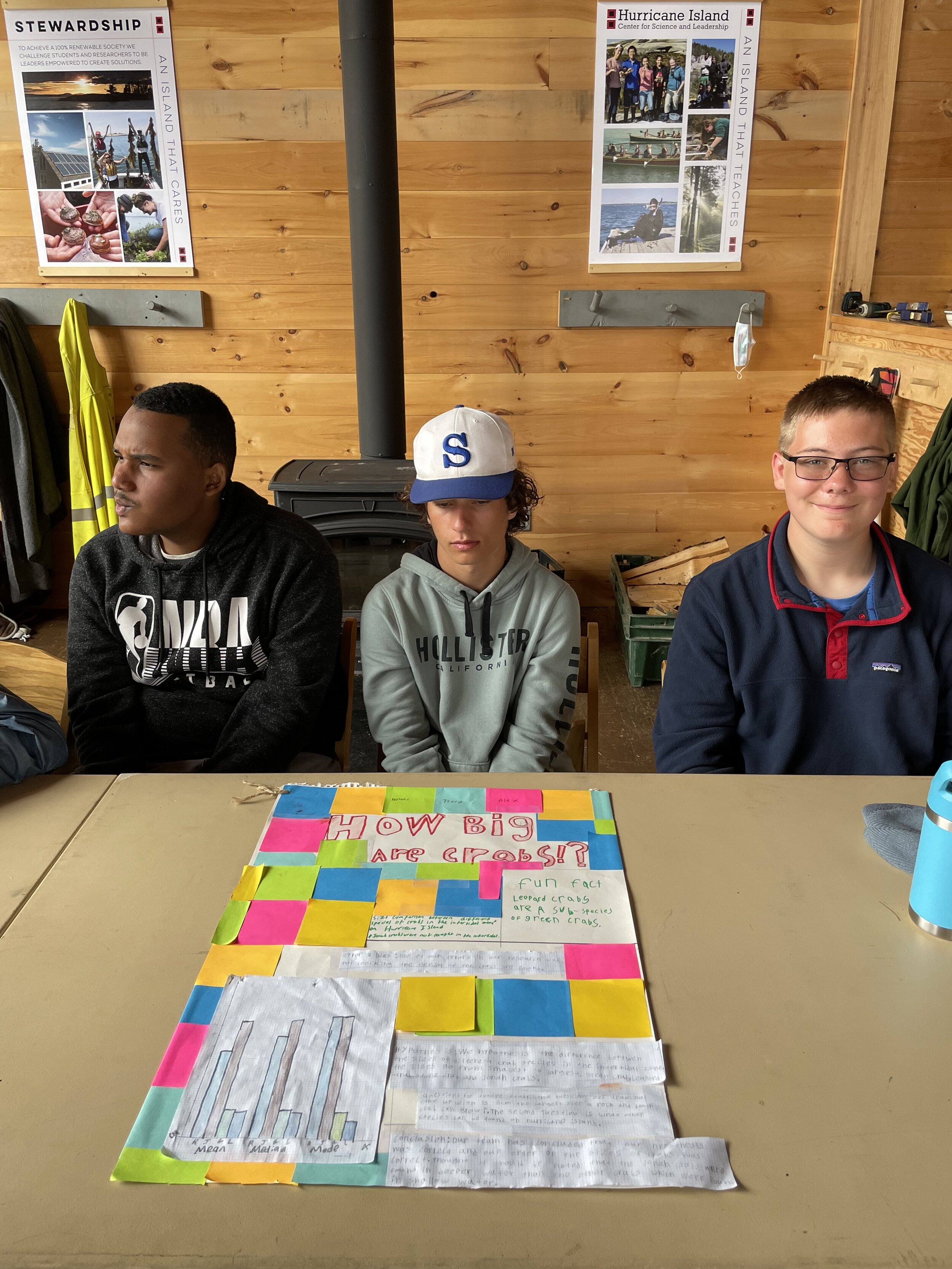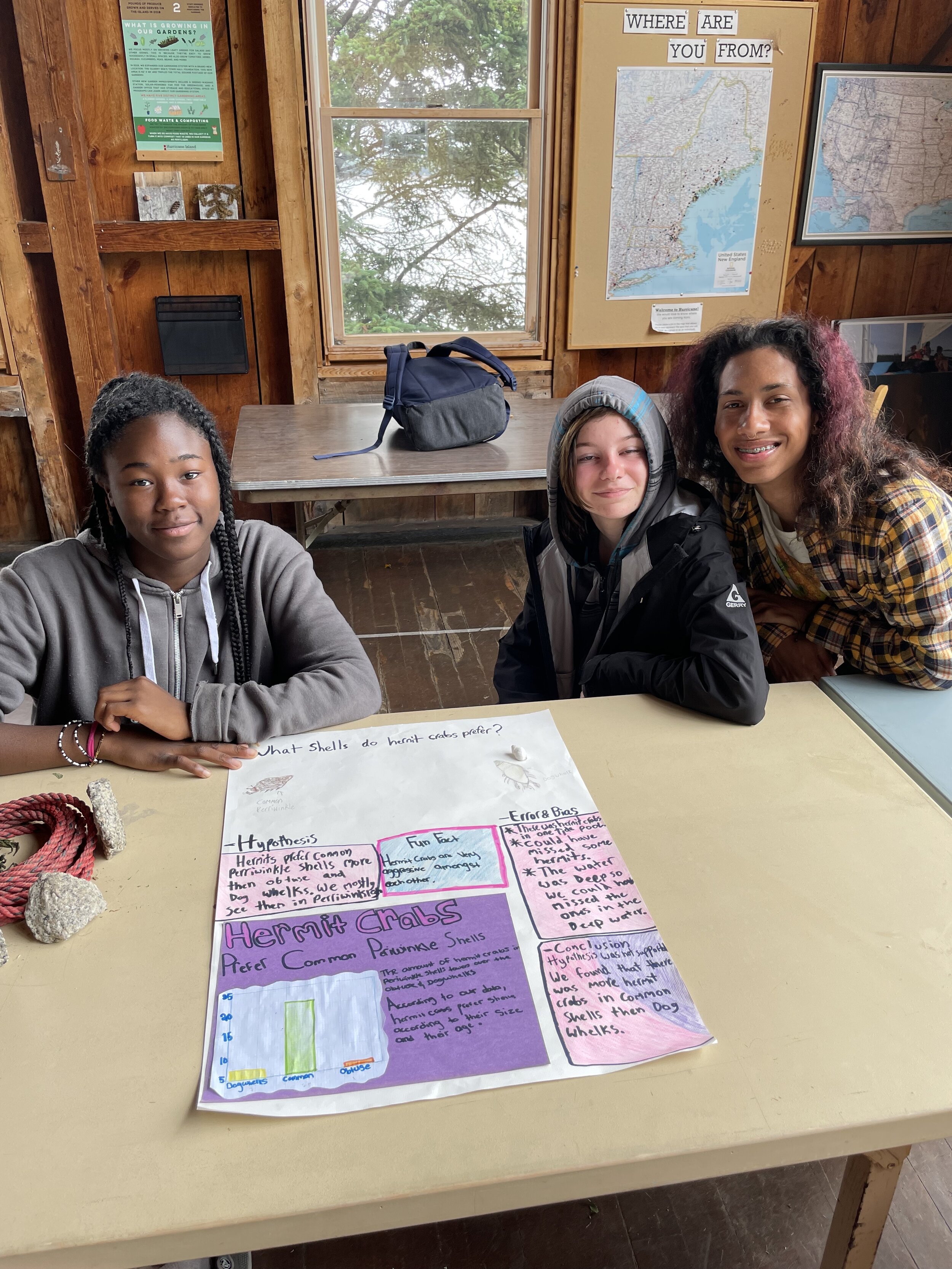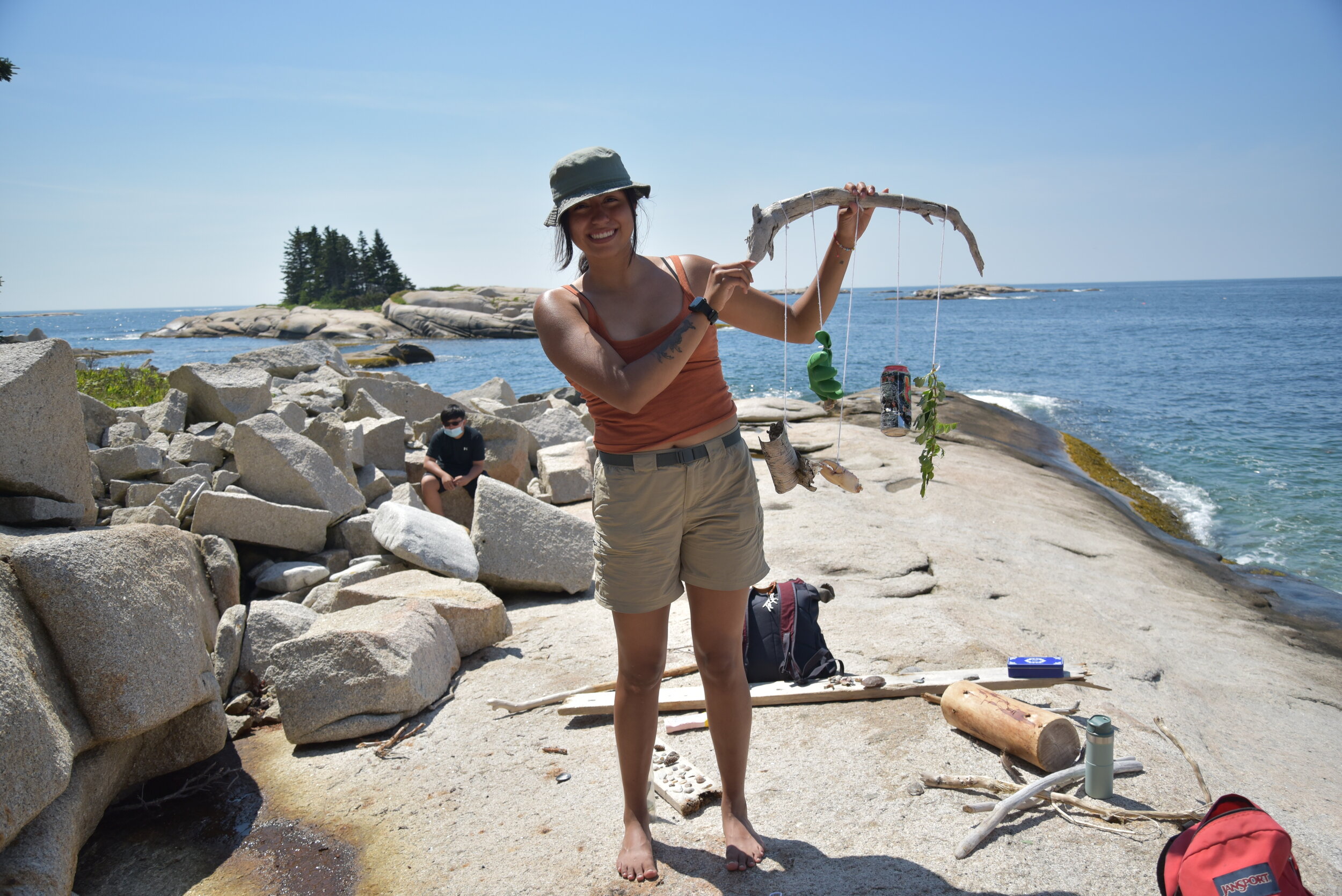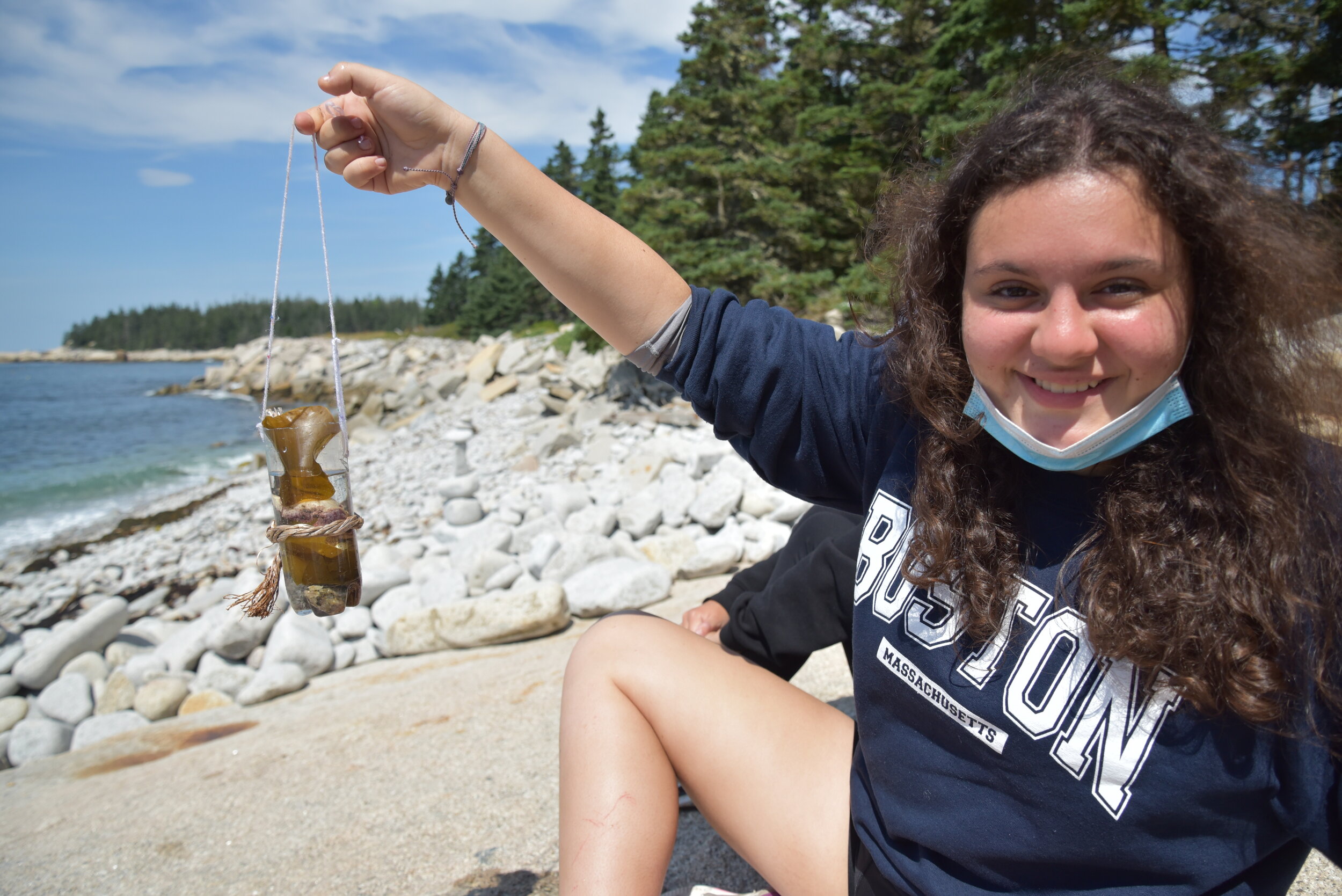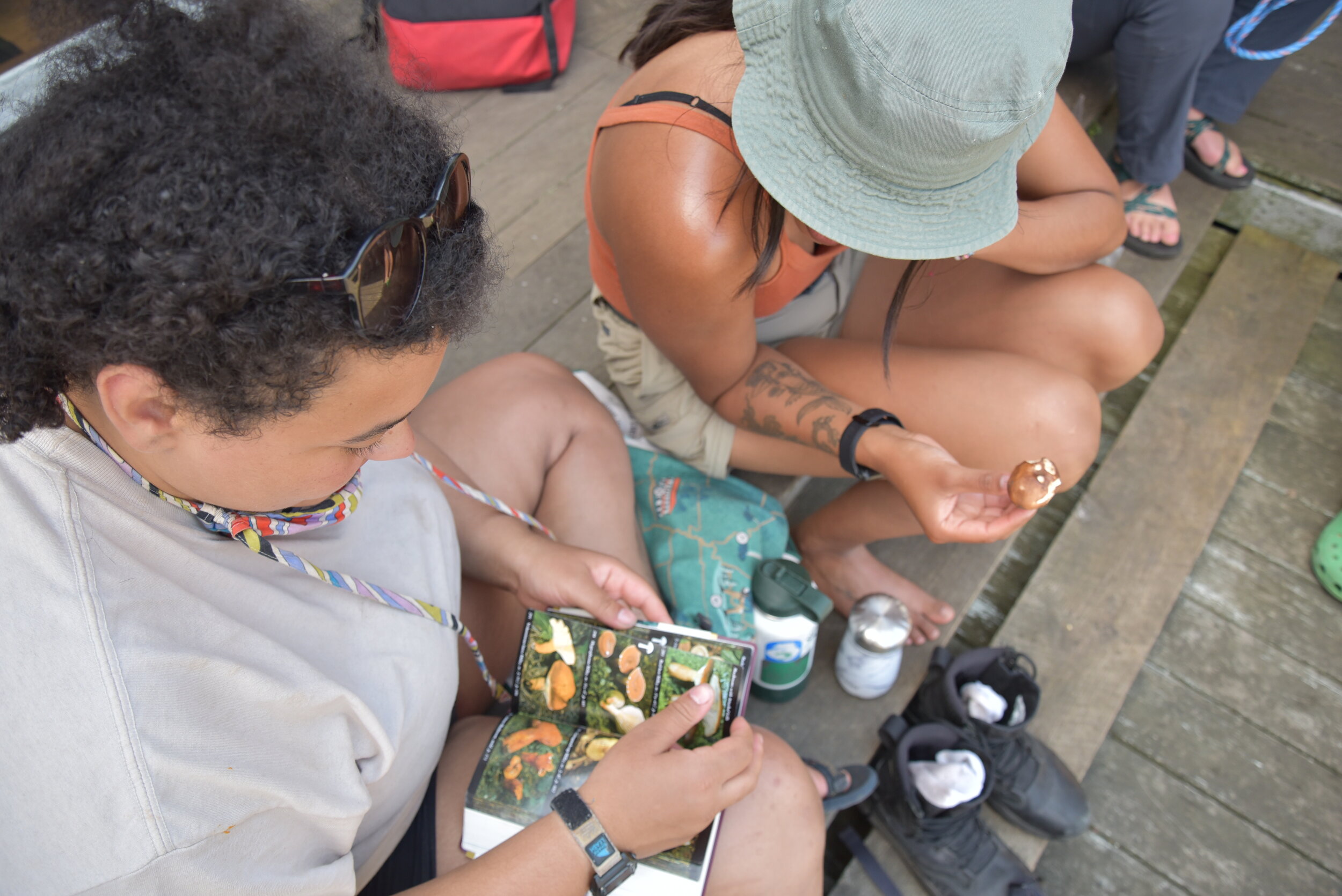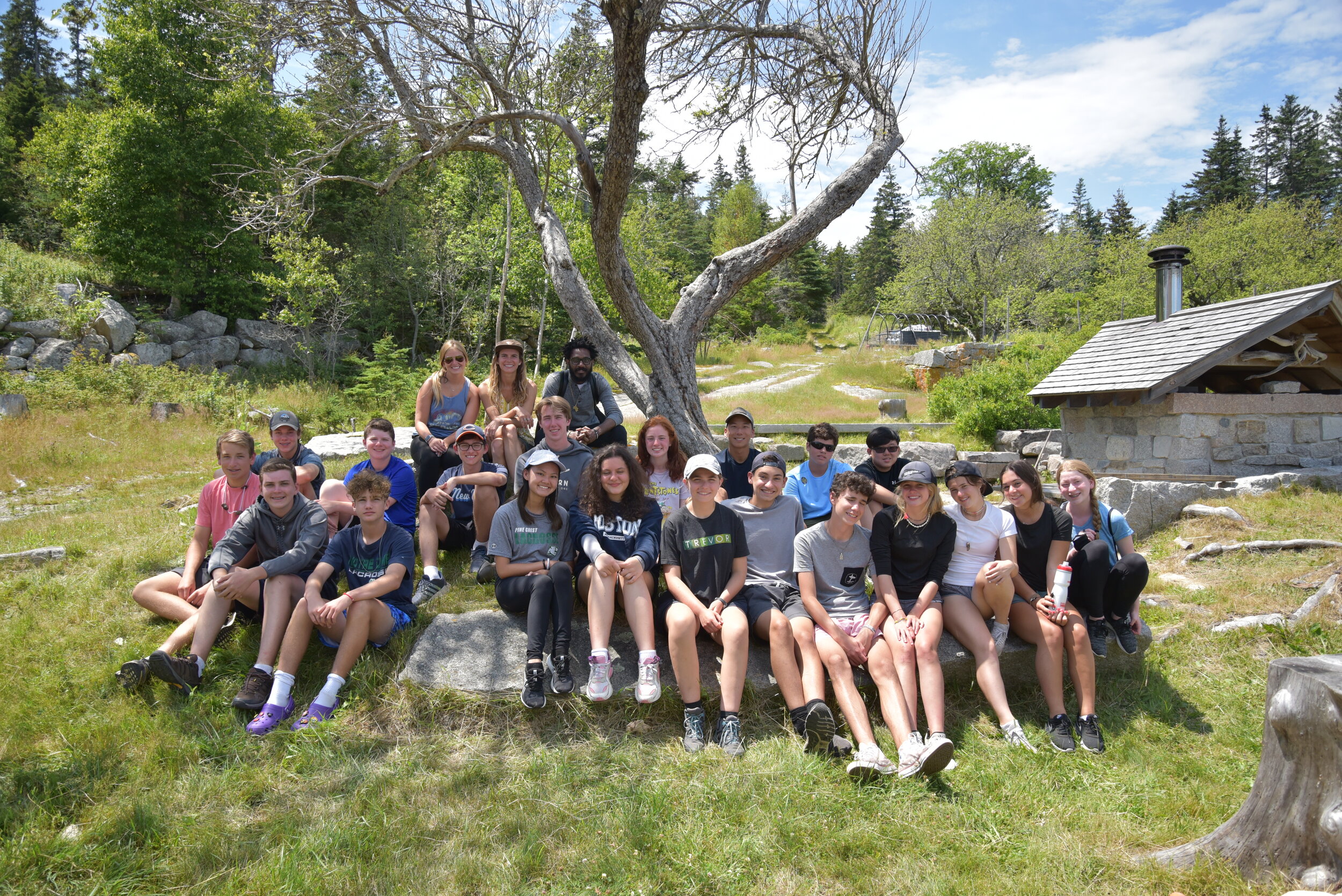By Kyle Amergian, Education Manager
The last week of summer programming included the 2021 session of Women of Water, a long-running program designed by Director of Research, Phoebe Jekielek, specifically for high school girls and non-binary students interested in studying the ocean while practicing community building and leadership. Among the new faces arriving on Hurricane for the week-long course were three instructors, Kate Kyros, Kerry Whittaker, and Becca Turkewitz, former colleagues who had co-taught an interdisciplinary marine science, humanities, and leadership course at the former semester school, Coastal Studies for Girls. Kate, Kerry, and Becca were thrilled to join the island team for the week as leaders of Women of Water. Together, we all worked to create a space of learning, laughter, and self discovery while wading in the intertidal, collecting plankton, and taking in the sounds and sights of the island.
Each student was handed a fresh new journal on their first day here. The journals were intended to be used during sit spots and certain lessons, but students loved them so much they began to use them in between lessons and during free time. The students filled them with notes, poems, journal entrees, questions, drawings, and paintings. Their journals were a tool that turned into a keepsake, and I hope that they are able to look through them throughout the years to remember all of the rich experiences that they had on Hurricane Island.
Throughout the week, students engaged in an arc of interdisciplinary science and leadership learning, moving from personal observation, to inquiry, to action and communication, building community. Along with hands-on field work in the intertidal zone, the group had the privilege to work with a wide range of ocean science and policy professionals beginning with Dana Wilfahrt and Rachel Miller of Rozalia Project who shared their love for the ocean and their work to spread awareness of ocean pollution and seek solutions to the ocean plastic problem. Dana and Rachel also offered tools for students to find their ‘sweet spot’ of personal action to help the ocean, based on what the ocean needs, what they’re good at, and what they love to do.
On Tuesday, students were introduced to cutting edge ocean sampling technology through the FlowCam™, an instrument that combines fluid imaging technology and microscopic imagery to visualize and analyze diverse ocean plankton. FlowCam™ representatives Harry Nelson and Savannah Judge shared their time, passion, and expertise with the group. Midweek, the WoW students greeted six mentors who came to Hurricane Island for a ‘Hike and Lunch’ that led to authentic dialogue and conversations about marine-related career paths and how to harness one’s passions and interests to make change in the world. Mentor expertise ranged from ocean science, to natural history, community climate change resilience, environmental leadership, marine management, and conservation-based aquaculture.
Humanities work led the students from analyzing birth and death records to reading sea poems by Mary Oliver, Wendell Berry, E.E. Cummings and others. Reflecting the science themes of the week, the leadership activities and conversations guided the students through personal observation, inquiry of group dynamics, and assessment of actions and effective communication for understanding and addressing climate anxiety as resilient leaders in our complex world.
Ideas and questions were formed on slippery rocks in the tidepools. Articles and poems were read on warm granite, along soft mossy trails and everywhere in between. Snacks were eaten on sun baked ledges. By the time the last night on the island rolled around, the group had become a true community through sharing these experiences. A bonfire was lit, s’mores were toasted, and students watched meteors fall across the sky while giving each other friendship bracelets.
When the Equinox pulled off the main pier with the Women of Water students aboard, there was a bittersweet feeling in the air. It was the end of another fruitful program week. It was also the end of summer programming. The Hurricane Island staff turned back to a quiet island that had been bustling with life just a moment ago. We had parted ways with a wonderful group of students, and now the time to part ways with a wonderful summer island crew was approaching. Each person that has stepped on this island this year has left positive memories that will live on with each and every one of us. Thank you, Hurricane Island.

